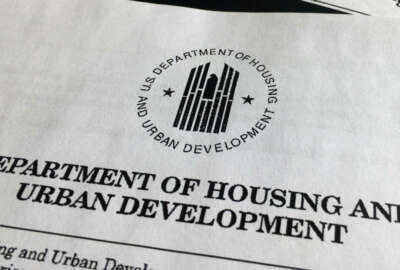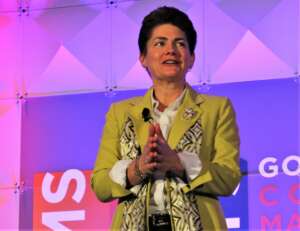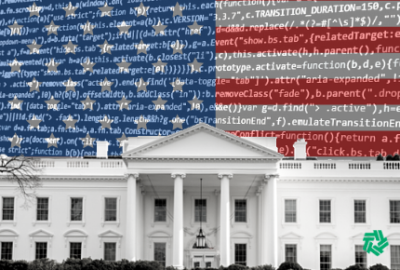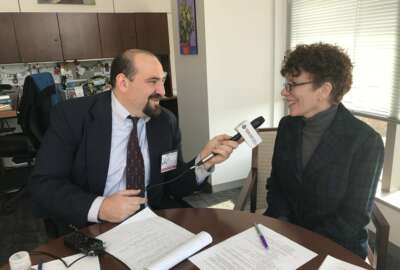
Exclusive
OMB, OPM to set up new hiring assessment line of business as part of IT modernization push
The last 15 years of federal agency IT modernization seems to be culminating under the Biden administration due to a perfect combination of technology maturatio...
On the surface, the difference between the Biden administration and the three previous ones’ focus on IT modernization may seem like $1 billion — the amount Congress approved for the Technology Modernization Fund as part of the American Rescue Plan.
But taking a step back and digging beneath the TMF’s pot of gold, you’ll see how the last 15 years of this journey toward IT modernization is culminating under the Biden administration’s purview.
Take, for example, digital signatures. This technology has been around since the late 1990s, but only in the last year did agencies fully realize its potential. Now the Office of Management and Budget is telling agencies in the budget passback, which Federal News Network obtained, to “accelerate the adoption and utilization of electronic signatures for public facing digital forms to the fullest extent practical in alignment with OMB Memorandum M-19-17 and OMB Memorandum M-00-15.”
Keep in mind, M-00-15 is from 2000 — 21 years ago. That is how long agencies have been looking at electronic signatures. But it was only since the COVID-19 pandemic began that the government realized, “hey, this digital signature thing actually works and we, for the most part, already own the technology.”
Electronic signatures is one of four areas OMB wants agencies to focus on when it comes to modernizing websites and digital services. The others include:
- Digitizing forms and government services;
- Electronic consent and access to individual’s records; and
- Interoperability of data to benefit public-facing services by using tools like application programming interfaces (APIs).
“Agencies should continue to prioritize and identify funding for the modernization requests on websites and services that are highly utilized by the public, or have been identify as a high impact service provider (HISP), or are otherwise important for public engagement, as outlined in the 21st Century Integrated Digital Experience Act, (P.L. 115-336),” the passback document states.
The push for digital signatures is illustrative of how the IT modernization pieces are coming together for the Biden administration. Without the pandemic, there is no reason to believe agencies would implement digital signatures on a broader scale given the rebuffs of the last two decades.
IT modernization is a bull market
The experience during the pandemic, combined with the financial support from Congress and the continued evolution of technologies like cloud, robotics process automation and data analytics opens the door wider for the Biden administration than any of the others in the last 20 years.
The TMF and the even more powerful, but less celebrated, working capital funds from the Modernizing Government Technology Act are among the most important tools Congress has given agencies in the last 25 years. This is especially true if OMB relaxes the payback model for the TMF so the loans become more like grants.
These are all reasons why IT modernization is such a bull market across agency and vendor communities.
Maria Roat, the deputy federal chief information officer, said at the recent CompTIA webinar that the TMF is about accelerating projects and enabling multi-year funding.

She said the $1 billion in the TMF coffers today will go for a variety of projects including those that focus on protecting “high value assets, improving public citizen services across the federal government, as well as improving and balancing some of the foundational technical maturity across the federal government and those common scalable services that can really drive cost efficiencies across the federal government.”
Roat pointed to one of the TMF funded projects for the Department of Housing and Urban Development as an example of the type of projects the board is looking for. HUD received $13.8 million to modernize five legacy mainframe systems.
“HUD mainframe modernization, there’s a playbook coming out of that. So other agencies, they’re going through their mainframe modernization, they can take lessons learned from HUD and apply that,” she said. “As we as we look to scale and accelerate the board, there’s a lot of things that we’ve already done over the last three years, as we’ve matured, that we can apply to the future funding.”
The maturity that Roat talks about has soared during the pandemic when all of the non-IT leaders realized the importance of online services, applications and systems.
Roat said the TMF is not a CIO program. It’s one for CXOs who want to “drive the success of the program.”
Required to fund customer service efforts
That comes clear in the passback language.
OMB doesn’t just highlight technology initiatives, but agency goals that are underpinned by technology.
Another hot button issue that rose during the pandemic was customer service and specifically the way agencies reach citizens.
This is another example of a long-time goal, dating back to at least 1993 with the Government Performance and Results Act, which had a stated goal to “improve federal program effectiveness and public accountability by promoting a new focus on results, service quality, and customer satisfaction.”
While OMB has made customer service a cross-agency priority goal, issued more than a half a dozen memos and directives, playbooks and executive orders, and Congress has passed the GPRA Modernization Act and the E-Government Act, progress toward real improvements have seen its fits and starts.
The pandemic, however, helped drive home the old ways agencies dealt with citizens — coming into the office, massive call centers and even the old Pueblo, Colorado public service announcement from the 1980s just weren’t cutting it any more.
So OMB is building off the digital transformation COVID-19 forced many agencies to undertake by requiring agencies to spend money on these services.
“The administration is implementing a comprehensive approach to improving the equity, access, and overall delivery of federal services, which includes improving customer experience management,” the passback stated. The “levels included in passback support your High Impact Service Providers (HISPs) implementing the actions identified in their CX Action Plan. As a HISP, [your agency ] should leverage funding provided to prioritize the alignment of customer feedback efforts with governmentwide measures and other activities that increase their programs’ ability to design and deliver services for the American public, consistent with the maturity model and governmentwide measures provided in Section 280 of OMB Circular A-11.”
You can talk all you want about technology and customer experience, but the pandemic, once again, provided a stark reminder that agencies are only as good as their people. It’s trite to say “people are our greatest asset” when time and again actions taken by Congress or the administration undercuts that idea.
Speeding up the hiring process
This is another opportunity for the Biden administration to build on the Trump administration’s upskilling and reskilling programs, pick up the Obama administration’s hiring reform effort and add its own mark on the process that many point to as the one main reason the government struggles in so many ways.
To this end, the Biden administration is set to take the first steps by setting up a new Hiring Assessment Line of Business and requiring agencies to fund it in 2022.
“The LoB will support the implementation efforts of effective assessments and related efforts including governmentwide hiring actions and shared certificates. These contributions must not come from existing HR budgets,” the passback stated.
The Office of Personnel Management and OMB will jointly manage the Hiring Assessment LoB and the program office will reside in OPM.
Along with the new LOB, OMB wants agencies to spend money on “rebuilding their HR workforce to support recruitment and hiring efforts.”
“Agencies are expected to allocate funds in FY 2022 for: (1) dedicated employees to form talent teams (ideally at the agency component level); (2) tools to improve hiring assessment processes; and (3) internship and Pathways Program improvements,” the passback stated. “By June 30, 2021, agencies are required to send a plan to OPM and OMB that includes milestones and expectations, broken out by components, as appropriate, for how they will form a dedicated team responsible for transitioning to using effective hiring assessments for all competitive actions as well as steps to improve their internship/pathways program.”
Few would argue that these policy directives are a good first step, but the real test will be how OMB and its new deputy director for management, Jason Miller (I know, it’s weird to write that) — once the Senate confirms him — supports, oversees and encourages agencies to not just build on the lessons of the pandemic, but normalize these and other efforts that worked so well over the last year and not take a step backward.
Copyright © 2024 Federal News Network. All rights reserved. This website is not intended for users located within the European Economic Area.
Jason Miller is executive editor of Federal News Network and directs news coverage on the people, policy and programs of the federal government.
Follow @jmillerWFED
Related Stories

Technology Modernization Fund on track to receive biggest pay day ever

OMB’s Kent credits agency CIOs, industry for quick fixes as IT demand surged




